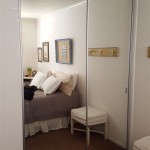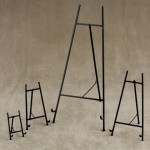DIY Wood Frame for Mirror
Adding a custom-made wood frame to a mirror elevates its aesthetic appeal and adds a touch of personalized craftsmanship to any space. This project is achievable for most skill levels, requiring basic woodworking tools and readily available materials. This article provides a comprehensive guide to constructing a DIY wood frame for a mirror.
Materials Required:
The first step involves gathering the necessary materials. These typically include:
- Wooden boards: The type of wood is a matter of personal preference. Pine, oak, and maple are popular choices due to their availability and workability. The dimensions of the boards will depend on the size of the mirror and the desired frame width.
- Mirror: Accurate measurements of the mirror are crucial for determining the dimensions of the frame.
- Wood glue: A strong wood glue is essential for secure bonding of the frame pieces.
- Wood screws: These provide additional structural support to the frame.
- Measuring tape: Accurate measurements are essential throughout the project.
- Miter saw or hand saw with miter box: Used for cutting accurate angles on the wood.
- Sandpaper: Various grits, from coarse to fine, are required for smoothing the wood.
- Wood stain or paint (optional): Adds a finishing touch and protects the wood.
- Finishing nails: Small finishing nails secure the mirror backing.
- Mirror clips or adhesive: These secure the mirror within the frame.
- Safety glasses and dust mask: Essential safety equipment for woodworking.
Measuring and Cutting the Wood:
Accurate measurements are paramount to a successful outcome. Measure the mirror's length and width precisely. Add twice the desired frame width to each measurement to determine the length of each frame piece. For example, for a mirror measuring 20x30 inches and a desired frame width of 3 inches, the frame pieces would need to be 26 and 36 inches long, respectively.
Using a miter saw or a hand saw and miter box, cut the wood at 45-degree angles. This creates mitered corners, resulting in a professional and seamless frame appearance. Ensure the opposite sides of the frame are equal in length for proper assembly.
Assembling the Frame:
Once the wood pieces are cut, dry-fit them around the mirror to ensure a proper fit. Adjustments can be made if necessary. Apply wood glue to the mitered edges and join the pieces together, forming a rectangular frame. Use clamps to hold the frame together while the glue dries, ensuring tight joints and a square frame.
For added stability, reinforce the joints with wood screws. Pre-drill pilot holes to prevent the wood from splitting. Countersink the screws and fill the holes with wood filler for a smooth finish. Allow the filler to dry completely and sand it flush with the surface.
Sanding and Finishing:
Sand the entire frame using progressively finer grits of sandpaper. This process smooths any rough edges and prepares the wood for finishing. Remove any dust with a tack cloth.
The frame can be left natural or finished with stain or paint. If using a stain, apply it according to the manufacturer's instructions, allowing sufficient drying time between coats. If painting the frame, apply a primer followed by two coats of paint. Allow each coat to dry completely before applying the next.
Attaching the Mirror:
Once the finish is dry, it's time to secure the mirror to the frame. Lay the frame face down on a protected surface. Carefully place the mirror within the frame, ensuring it is centered and evenly spaced. Secure the mirror using mirror clips or strong adhesive. Mirror clips offer the advantage of being adjustable.
For added security, a backing can be added to the frame. This can be a piece of thin plywood or hardboard cut to the same size as the frame's outer dimensions. Attach the backing using finishing nails or small screws.
Hanging the Mirror:
Attach appropriate hanging hardware to the back of the frame. The type of hardware will depend on the weight of the mirror and the wall material. Ensure the hardware is securely attached and can support the weight of the mirror. Follow the manufacturer's instructions for proper installation.
Creating a DIY wood frame for a mirror allows for customization and personalization, resulting in a unique piece that complements any décor. This project provides a satisfying sense of accomplishment and enhances the overall aesthetic of the mirror and the surrounding space.

Diy Farmhouse Wood Frame Mirror She Gave It A Go

Iheart Organizing Diy Wood Framed Mirror

Easy Driftwood Mirror The Wood Grain Cottage

Diy Farmhouse Wood Frame Mirror She Gave It A Go

Wood Mirror Diy Shanty 2 Chic

Diy Farmhouse Wood Frame Mirror She Gave It A Go

Iheart Organizing Diy Wood Framed Mirror
Diy Wood Frame Mirror Farmhouse Industrial Bathroom Joyfully Treasured
:strip_icc()/103277918-54b5fa54478a412cab48f001dd21b5ca.jpg?strip=all)
How To Make A Diy Farmhouse Mirror Frame

Diy Rustic Wood Frame Mirror Amanda Katherine








